By Mónica Correa, Contributing Writer, Classical Wisdom
Nowadays folks use fast cars and designer handbags to flaunt their wealth. Back in the ancient Greek world, however, owning horses was the ultimate status symbol. This tradition continued during the Roman Empire and indeed, anyone who partook in equine activities was immediately assumed to belong to the elite. Chariot racing was no exception… And while the rich got the bragging rights, it was the drivers, the horses and even the fans that took the risk.
Chariot Racing’s Unknown Origins
Chariot racing was a popular sport for centuries, enjoyed under various governments and leaders throughout the ancient world. Its exact origins, however, are unknown.
We know that the sport existed in the Mycenaean world because of artistic evidence on pottery. Meanwhile, the first literacy reference to a chariot race is in
Homer’s Iliad, at the funeral games of Patroclus.

Chariot racing on a black-figure hydria from Attica, ca. 510 BC
According to one legend mentioned by Pindar, a chariot race was said to be the event that founded the Olympic Games. The story goes that King Oenomaus challenged suitors for his daughter Hippodamia to a race. He was defeated by Pelops, who then went on to found the Games in honor of his victory.
However, the sport was actually added in 680 BC and included both four-horse (tethrippon, Greek: τέθριππον) and two-horse (synoris, Greek: συνωρὶς) chariot races, which were essentially the same aside from the number of horses. The tethrippon was considered the most dangerous event at the ancient games and was held in the hippodrome.
While the Romans probably borrowed chariot racing (as well as the racing tracks) from the Etruscans, who themselves borrowed it from the Greeks, Roman legend tells another story. The myth says that chariot racing was used by Romulus just after he founded Rome in 753 BC as a way to distract the Sabine men.

The Charioteer of Delphi, one of the most famous statues surviving from Ancient Greece
Chariot Racing’s Characteristics
Some scholars prefer to differentiate between sport, athletics and spectacle. Chariot racing is considered a spectacle because it is essentially a public performance with an audience.
It’s important to remember that chariot racing was extremely dangerous for both the driver and the horses. Driving a racing chariot required strength, skill and courage, and was rarely done by the owner of the chariot, who was not even obligated to attend to the races. Instead, the driver was usually the owner’s family member or slave. The money won by the driver went directly to the owner of the chariot, although wining could put the charioteer in a different social stratum. In fact, drivers could become celebrities just for surviving. Based on this, we can deduce that life expectancy was not very high.

Chariot race of Cupids; ancient Roman sarcophagus in the Museo Archeologico (Naples). Brooklyn Museum Archives, Goodyear Archival Collection
Chariot Racing’s Teams and Fans
The most exciting part of the race for the audience was the turns at the end of hippodrome, which were dangerous, even deadly. The spectators (which, unlike other activities at the time, also included women) were invited to vocalize their support or disfavor at times. The group solidarity, as well as the resulting factional violence, was probably not so different from modern soccer or football.
According to
Tertullian, an early Christian author from Tunisia, there were originally only two teams: Red and White, sacred to summer and winter, respectively. These were eventually doubled, the additional colors being Blue and Green. Each team could have up to three chariots each in a race.

A white charioteer; part of a mosaic of the third century AD, showing four leading charioteers from the different colors, all in their distinctive gear
The Blues and the Greens gradually became the most prestigious factions, supported by emperors and the populace alike. Records indicate that on numerous occasions, Blue against Green clashes would break out during the races. The surviving literature rarely mentions the Reds and Whites, although their continued activity is documented in inscriptions and in curse tablets.
Entertainment for Big Audiences
During the Roman period chariot races commonly took place in a circus. The main center, known as Circus Maximus, measured 2,037 ft. in length and 387 ft. in width and could sit 250,000 people. It was the earliest circus in the city of Rome.

The plan of the Circus Maximus
Unlike Greek chariot races, which had 12 laps, a Roman chariot race consisted of only seven turns around the circus. Once the raced started, chariots could move forward no matter what, including purposefully causing extreme crashes, called naufragia. The goal was to weaken the enemy, then beat him.
The design of the chariots was simple: wooden carts with two wheels and an open back. They also used the same style of carts that were used during wars. Unlike other contemporary entertainment activities, the charioteers were always dressed, probably for safety reasons. They wore helmets and sleeved garments that were probably white, according to paintings of the time. Roman drivers wrapped the reins round their waist, while the Greeks used to hold the reins in their hands.

A chariot race during the reign of Trajan. After the painting by Ulpiano Checa, by Granger
Famous Charioteers
Throughout the history of the sport there were a
few very famous drivers who achieved a level of celebrity status unparalleled even today. One such celebrity driver was Scorpus, who won over 2000 races before being killed in a collision at the
meta when he was about 27 years old.
The most famous of all, however, was Gaius Appuleius Diocles who won 1,462 out of 4,257 races. At the age of 42, Diocles retired after a 24-year career and his winnings reportedly totaled 35,863,120 sesterces ($US 15 billion). This makes him the highest paid sports star in all of history.

Gaius Appuleius Diocles (104 – after 146) was a Roman charioteer, who became one of the most celebrated athletes in ancient history.
The horses could also become celebrities, but their life expectancy was low. Just like fantasy baseball players today, the Romans kept detailed statistics of the names, breeds, and pedigrees of famous horses.
Chariot Racing’s Decline
Chariot racing faded in importance after the fall of Rome. Some records indicate that Nika riots marked the start of its decline. Eventually emperors banned specific sports, including the Olympic games and public entertainment on Sundays, as a way to suppress paganism.

A winner of a Roman chariot race, from the Red team
While Chariot racing no longer exists in any of its ancient shape or form today, the same culture of fiercely dedicated sport worship, and violence, can be seen today… Fans scream out at trained athletes who compete for honor, status and, of course, money. It shows that perhaps, deep down, the craving for sport entertainment hasn’t evolved that dramatically over time.

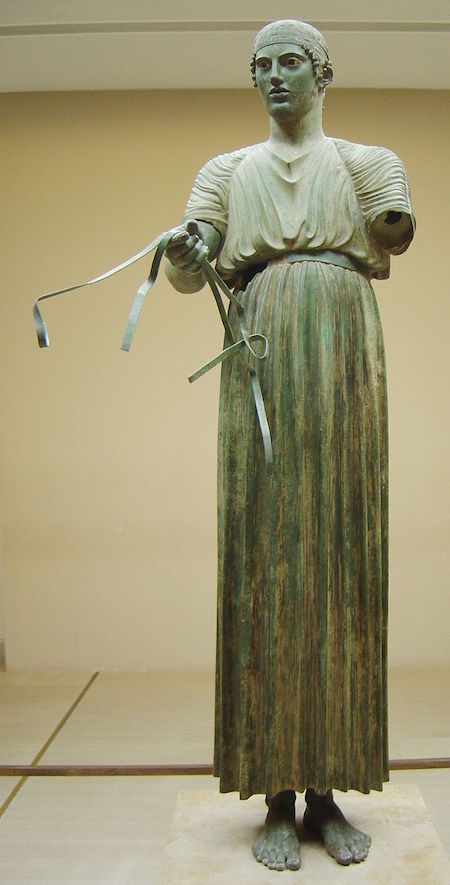

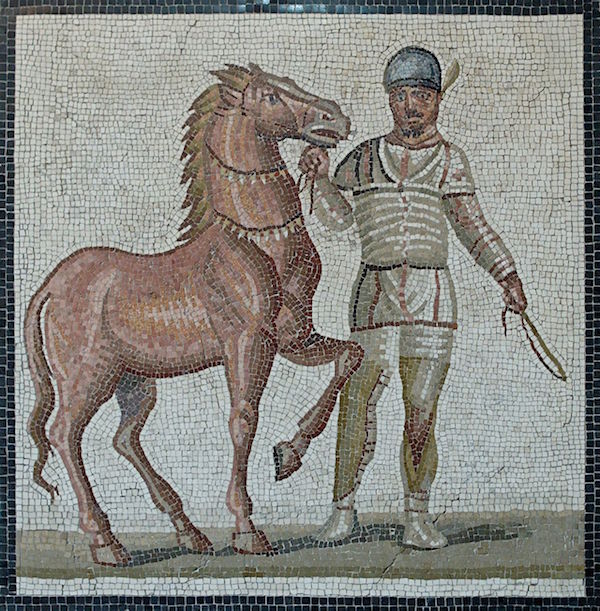
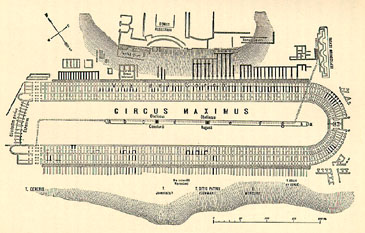
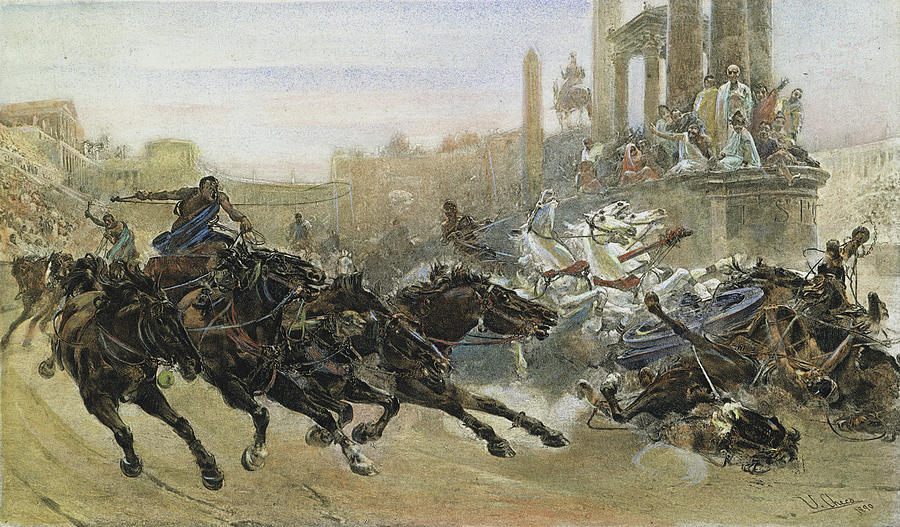

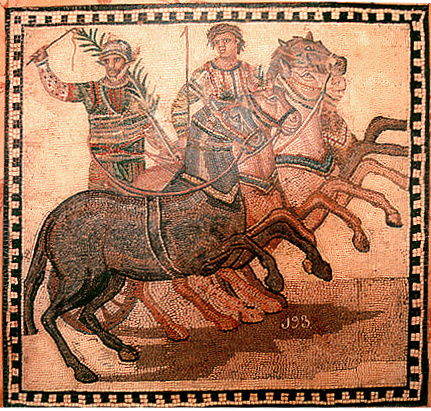








3 comments
The most famous chariot race of all is the one in the movie Ben-Hur. That took a long time to film, but it is spectacular on screen.
Also, we have something similar today with auto racing. NASCAR fans show up to cheer their favorite drivers every week.
An excellent article! Like most people interested in classical culture I knew about chariot races but this article added quite a bit to my knowledge of them. The extent of their importance and interest in classical times I was unaware of, seeing them as mostly an elite form of entertainment. Comparing them to modern sport spectacles brought home the reach of just how many classes of society followed them closely. The photos added greatly to the articles appeal, helping to flesh out what was being told. A concise and very informative article which I very much enjoyed reading.
Love this article!
Trackbacks
Our apologies, you must be logged in to post a comment.